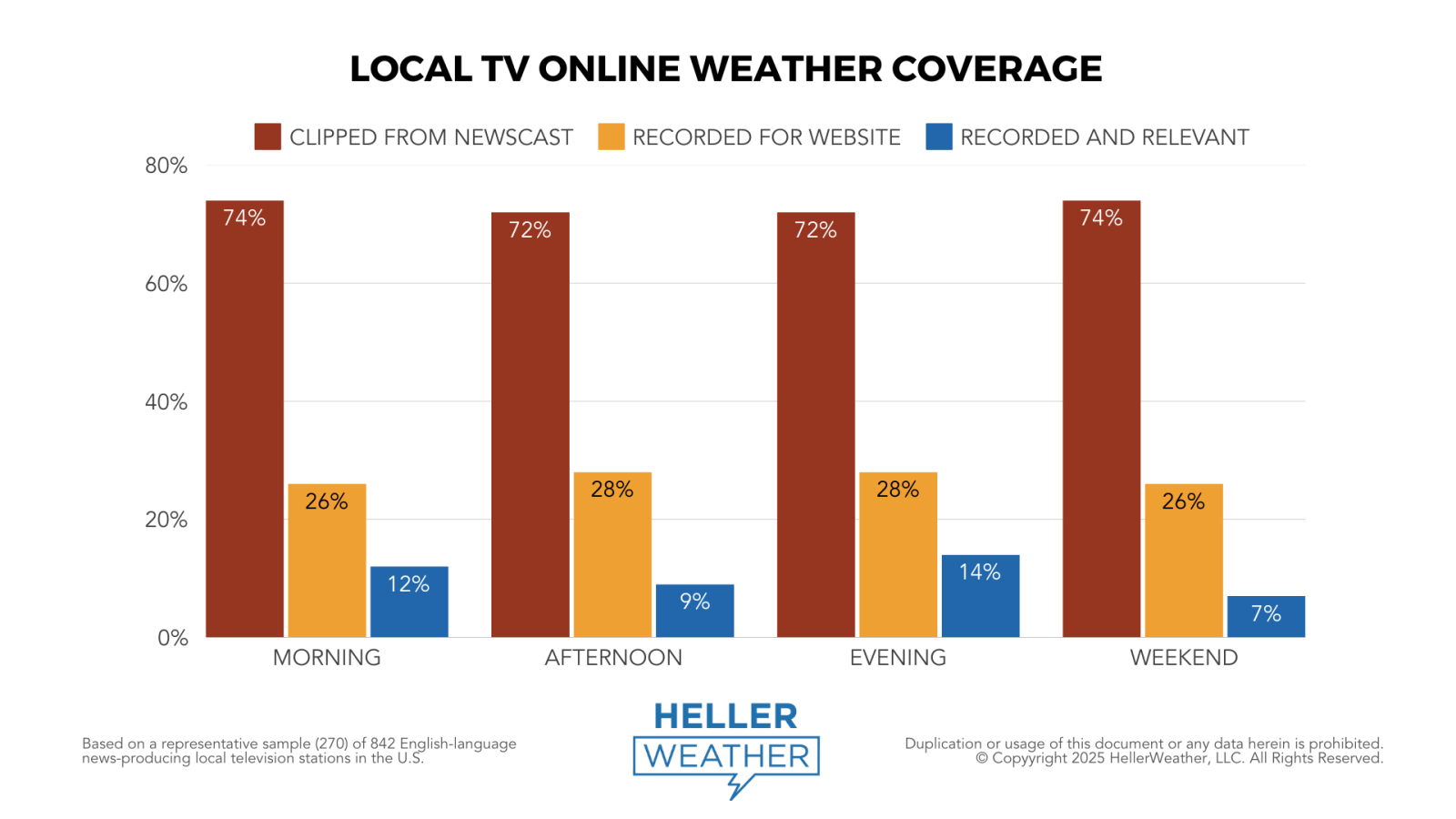Updating Local Weather Content: A call to action for TV stations

By Tim Heller,
Weather Communications Coach
It's always been said that people watch local news for the weather. It might also be the reason people check a local TV station's website and mobile app. According to Pew Research, nearly half (48%) of U.S. adults prefer to access local news online. 90% said that they were looking for an update on the weather.
Unfortunately, based on research conducted by the coaching company HellerWeather, consumers are likely to find outdated weather information on a TV station's website.
The 'Latest Forecast' is usually not the latest forecast.
In a nationwide study, only 11% of local TV stations published relevant weather content for their website. Meaning, the webcast was recently updated and included forecast information that was not outdated at the time of viewing. The vast majority of local TV stations uploaded a clip of a weathercast that aired several hours and, in some cases, several days before. This was true no matter when the webcasts were viewed. Weekends, however, were worse. Over 80% of the online webcasts hadn't been updated since the previous Friday.
The one unique element on every TV station's website and the difference between the station's mobile app and a generic smartphone weather app is the webcast produced by the station's broadcast meteorologists. Uploading a weathercast clipped from a newscast might have been sufficient 30 years ago when websites were first launched. But it's unacceptable today, given the software and hardware that allow broadcast meteorologists to record and upload quick weather updates.

What works on-air doesn't work online.
The lack of relevant, local weather content presents an opportunity for enterprising TV stations striving to build a loyal online following and increase digital revenue. And given the declining on-air ratings, shouldn't this be the goal of every local TV station?
To remain a vital part of the community, local newsrooms must serve all viewers across every platform, broadcast and digital, at all hours and every day of the week. That requires strategic thinking and careful planning.
It starts with a digital content audit to identify the strengths and weaknesses in the products currently produced by the weather team. Next, conduct a workflow analysis to identify adjustments that need to be made to maximize continuous 24/7 coverage. Develop a recording schedule to guarantee the online content is regularly updated. Finally, design webcast formats to ensure the content remains relevant until the next recording.
Digital coverage is accessible all day, every day. The news and weather content consumers find online must be
relevant, regardless of when they visit the website, tap on the weather app, or tune into the streaming platform.
While broadcast TV might be the reason the station exists in the first place, it's likely not the reason the station will be around in 5-10 years.
Click here to review the full results of the research.
